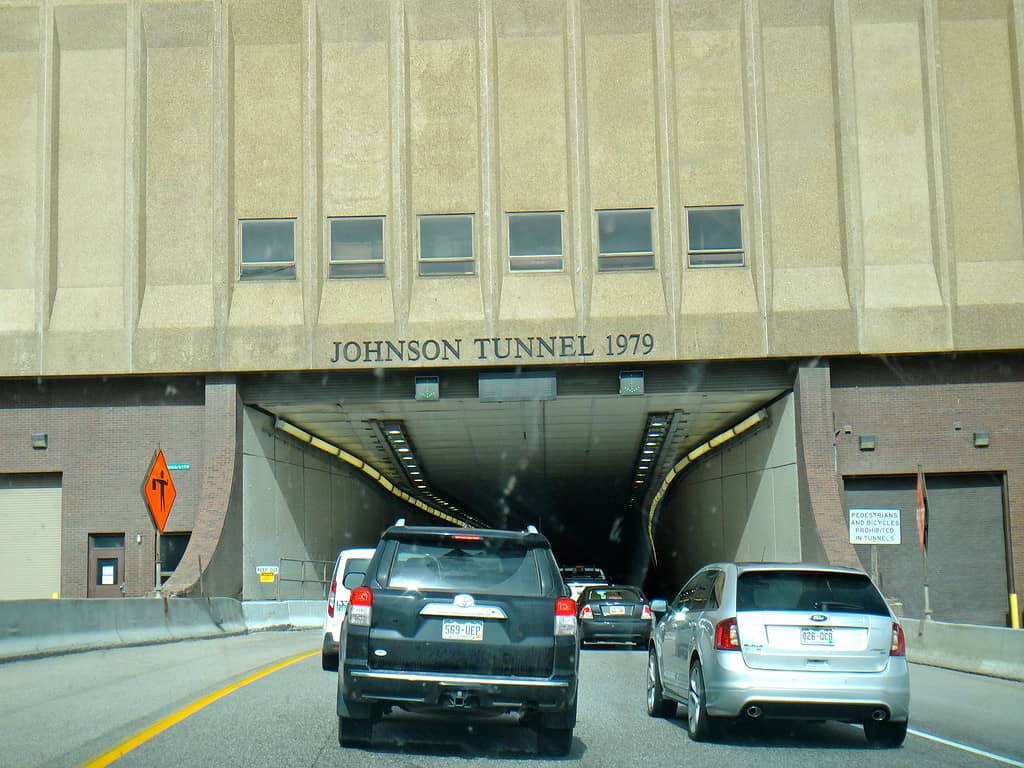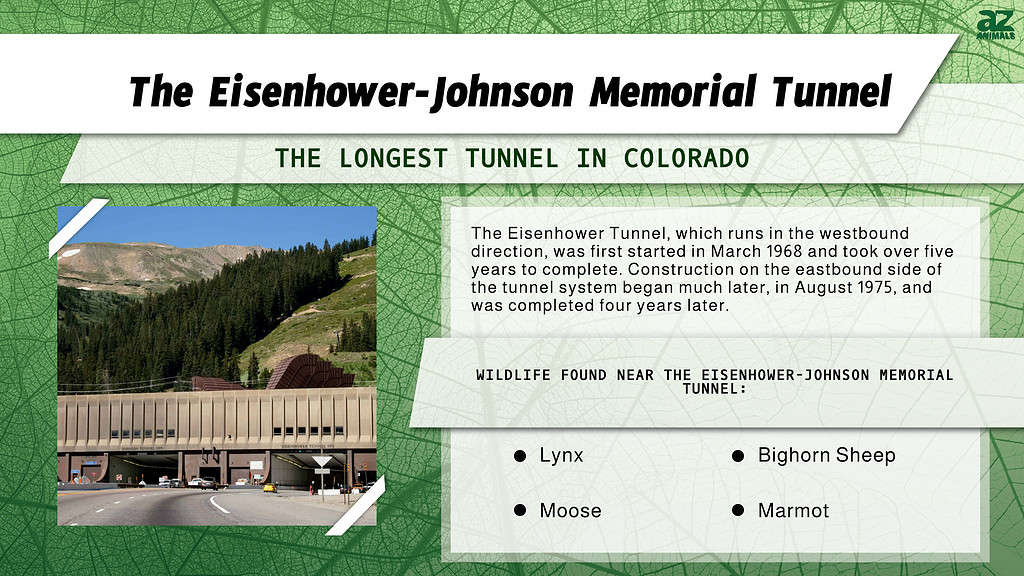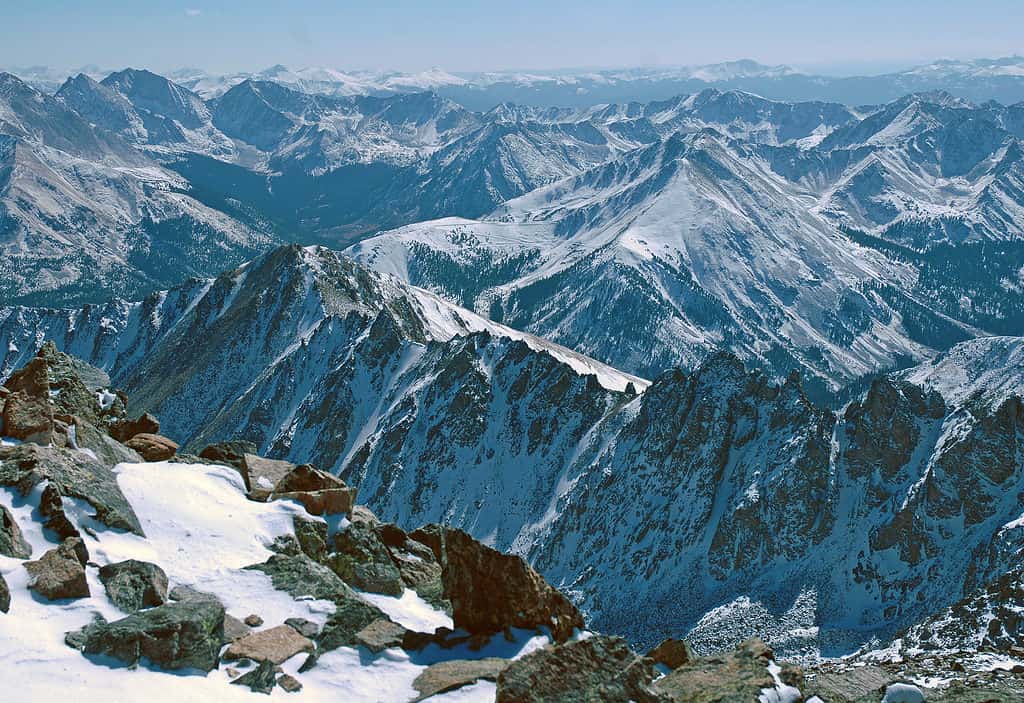In the heart of Colorado lies a feat of engineering prowess – the longest drivable tunnel in the state. This underground marvel stretches for miles, providing an essential link between two regions that were once separated by rugged terrain. The construction of this tunnel was no small feat, requiring years of planning and execution to carve through solid rock and create a passageway for trains to traverse.
Today, it stands as a testament to human ingenuity, connecting communities and enabling commerce to thrive where it once seemed impossible. In this article, we will explore the story behind the creation of this impressive structure and discover what makes it such an important part of Colorado’s history.
The Longest Drivable Tunnel in Colorado

The Eisenhower-Edwin Johnson Tunnel at eastbound Interstate 70 is the longest drivable tunnel in Colorado.
©quiggyt4/Shutterstock.com
The Eisenhower-Johnson Memorial Tunnel (EJMT) is an engineering marvel that spans over 1.7 miles through the Rocky Mountains of Colorado. As the longest drivable tunnel in Colorado, it stands tall as a testament to human ingenuity and perseverance.
At first glance, the EJMT appears unassuming – simply a pair of dark openings cut into the mountain rock face. However, upon closer inspection, one can see that the tunnels are massive structures that tower over cars and trucks as they pass through.
The entrance to the tunnel is marked by large concrete arches that frame each opening like gateways. These arches give way to soaring ceilings and walls lined with reflective tiles designed to help drivers maintain their bearings while driving through such a long stretch of darkness.
As vehicles pass through this underground corridor at speeds nearing 50 miles per hour, they are surrounded by towering walls made of concrete reinforced with steel rebar – an impressive feat considering that this construction was completed back in 1973 when technology was far less advanced than today’s standards.
Overall, despite its utilitarian purpose as a means for traffic flow between eastern and western Colorado, there is no denying that The Eisenhower-Johnson Memorial Tunnel is an architectural wonder deserving of recognition for its sheer scale and magnitude.
How Long Is the Eisenhower-Johnson Memorial Tunnel?
The Eisenhower-Johnson Memorial Tunnel in Colorado is extremely long, spanning 1.693 miles westbound and 1.697 miles eastbound from the outside faces. It has a grade of 1.64%, which means it rises 1.64 feet for every 100 feet horizontally. The tunnel curves slightly to the left halfway through, while the approach grades are seven percent on the west side and six percent on the east side. Inside, it has a maximum excavated height of 48 feet and width of 40 feet, although drivers only experience 16 feet 4 inches from the roadway to the ceiling, with 13 feet 11 inches of actual clearance due to message boards mounted on the ceiling.
The two traffic lanes are 13 feet each, with a total travel width of 26 feet. Maintenance personnel uses a walkway next to the vehicle lanes with three cross passageways spaced 2,000 feet apart.

Construction
The construction of the twin tunnel system, comprising the Eisenhower Tunnel and Edwin C. Johnson Tunnel, was a massive undertaking that spanned several years. The Eisenhower Tunnel, which runs in the westbound direction, was first started in March 1968 and took over five years to complete. This tunnel is named after President Dwight D. Eisenhower, who played an instrumental role in promoting interstate highway systems during his presidency.
On the other hand, construction on the eastbound side of the tunnel system began much later – specifically, in August 1975 – and was completed four years later. This second tunnel is named after Governor Edwin C. Johnson, who served as governor of Colorado from 1933 to 1937 and again from 1950 to 1955.
Despite being constructed at different times, both tunnels are equally important for facilitating travel between Denver and Summit County by providing a critical link through some of Colorado’s most challenging terrain. Additionally, these tunnels have undergone significant maintenance work over the decades since their completion so that they can continue serving motorists safely and efficiently well into future generations!
Purpose

The Eisenhower-Johnson Memorial Tunnel helps commuters avoid Loveland Pass in winter.
©Nyker/Shutterstock.com
The Eisenhower-Johnson Memorial Tunnel, located in Colorado, is a critical transportation infrastructure that serves the purpose of providing a safe and efficient route for motorists traveling between Denver and Summit County. The tunnel was constructed to provide an alternative to the previous treacherous path over Loveland Pass, which would often be closed due to heavy snowfall or accidents. Drivers shave a little over nine miles off of their commute by taking the tunnel instead of Loveland Pass.
The EJMT tunnel in Colorado has become a crucial part of the transportation system and sees significant traffic throughout the year. To ensure its availability for travelers at all times, the tunnel operates non-stop, 24 hours a day, seven days a week.
Keeping this essential piece of infrastructure operating smoothly requires an extensive workforce. Thirty employees work at EJMT full-time. These workers are responsible for various duties such as maintenance and repairs on equipment like ventilation systems or lighting fixtures inside the tunnel. There are also snow removal duties, water treatment, surveillance, and heavy equipment to repair.
Overall these hardworking individuals ensure that drivers can safely navigate through this mountain pass without any hiccups along the way.
Where is the Eisenhower Tunnel Located on a Map?
To locate this impressive landmark on a map, you can start by looking for Loveland Pass, which is situated just to the north of the tunnel’s entrance. Loveland Pass sits at an elevation of over 11,000 feet and provides breathtaking views of the surrounding mountain ranges.
From there, follow Interstate 70 westward until you reach Exit 216, which will take you directly to the entrance of the Eisenhower-Johnson Memorial Tunnel. As you approach this imposing structure from either direction along I-70, it becomes evident that this massive undertaking required years of planning and construction expertise to complete.
Whether you’re traveling through Colorado or simply exploring its many natural wonders on foot or by car, be sure to add a visit to this iconic landmark to your itinerary. From its stunning location high in the Rockies to its awe-inspiring scale and intricate design details, there’s no doubt that the Eisenhower-Johnson Memorial Tunnel remains one of America’s most impressive feats of engineering prowess today.
Wildlife Near the Eisenhower Tunnel

Beautiful rocky mountain
bighorn sheep
can be seen in Summit County, Colorado.
©John Raptosh/Shutterstock.com
The EJMT tunnel in Colorado is located in Summit County. But what many visitors to the area don’t realize is that it’s also home to some incredible wildlife.
Thanks to a restoration program that began in 1999, Lynx has made a comeback in the area near the Eisenhower Tunnel. These elusive creatures are rarely seen by humans, but if you keep your eyes peeled and your ears open, you just might catch a glimpse or hear their distinctive call.
In addition to Lynx, visitors can also spot bighorn sheep, Colorado’s official state animal, grazing on nearby hillsides or scaling rocky outcroppings with ease. And if you’re lucky enough to be there at the right time, you may even see moose or mountain goats wandering through the high alpine meadows.
But it’s not just larger mammals that call this area home. There are also plenty of smaller critters like beavers and marmots who make their homes along streams and among rocks. If you take the time to explore carefully and quietly, you’ll be amazed at how much wildlife surrounds this architectural wonder deep beneath the Rockies.
So whether you’re passing through on your way to another destination or making this beautiful area your final stop, don’t forget to keep an eye out for all of its inhabitants, both great and small.
The photo featured at the top of this post is © quiggyt4/Shutterstock.com
Thank you for reading! Have some feedback for us? Contact the AZ Animals editorial team.






